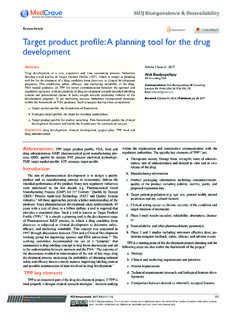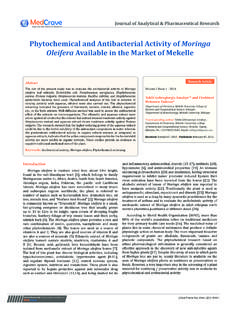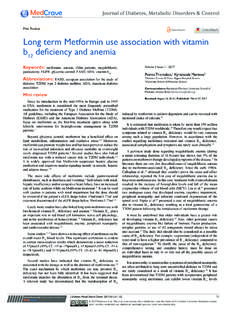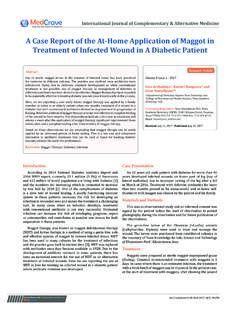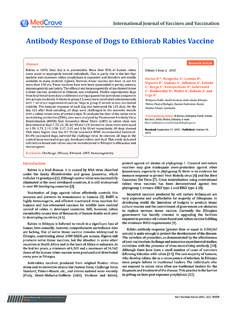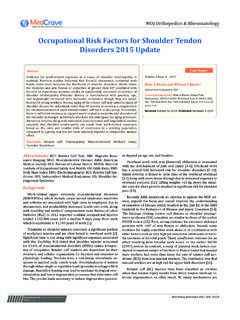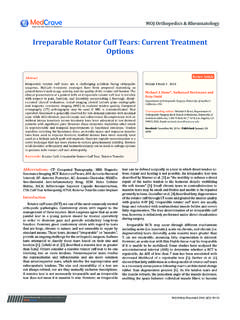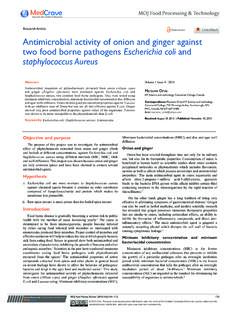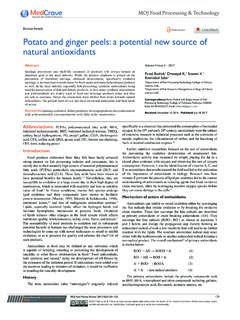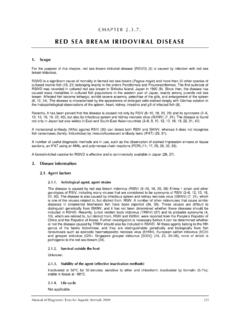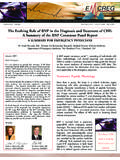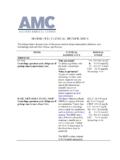Transcription of Pulmonary Hypertension: A Clinical Case Study - Medcrave
1 Submit Manuscript | processPathophysiologyThe pathophysiology of Pulmonary hypertension can vary, depending on the cause. It can be classified as idiopathic/primary, or it can be secondary to a variety of conditions, such as congenital heart defects, collagen vascular diseases, liver cirrhosis, infections, drugs and radiation therapy, and it can occur postoperatively for several reasons. It can be a result of increased Pulmonary vascular resistance due to lung conditions such as COPD, or after lung resection Secondary Pulmonary arterial hypertension due to cardiac or respiratory diseases can be caused by volume or pressure overload leading to proliferation of Pulmonary vasculature and therefore obstruction. Lung parenchymal diseases lead to vascular changes causing vasoconstriction. This increased vascular resistance causes increased right ventricular after load, and eventually hypertrophy and When lung parenchyma is destroyed (as in COPD), there is a destruction of vasculature as well.
2 Hyperinflation of the lungs compresses vascular beds, thus resulting in an increase in PVR. Polycythemia, which can result from chronic hypoxemia, increases the viscosity of the blood and contributes to hypertension as well, and alveolar hypoxia also causes Pulmonary vasoconstriction. Over time, this leads to hypertrophy of the tunica media of the Pulmonary vessels, fibrosis of the tunica intima, and an overall narrower lumen. This increase in vascular resistance and pressures leads to an increased right ventricular afterload, leading to dilation and hypertrophy of cardiac muscle mass in order to maintain cardiac hypertension commonly occurs post-operatively, especially after pneumonectomies, lobectomies, and cardiac surgeries, and most frequently after those surgeries that involve repair or replacement of a valve. Chronic left sided heart issues alter the structure and tone of Pulmonary vasculature, causing the resultant Pulmonary hypertension to be persistent.
3 Factors contributing to the severity of this hypertension include fluid overload, left-ventricular failure, acute lung injury or acute respiratory distress syndrome, Pulmonary emboli, and acidosis. Pulmonary hypertension can occur post-operatively due to factors related to the surgery Any sort of injury to the Pulmonary endothelium can alter the balance of vasoactive mediators including thromboxane, prostaglandin, and prostacyclin. For example, if thromboxane and prostacyclin are manufactured out of proportion to each other, the vessels favour constriction, and tone is increased. The endothelium may now release less of the vasodilator nitric oxide (NO) to counteract this effect. Some agents involved in this process, called mitogens, can then cause remodeling of vessel walls and smooth muscle growth in the tunica media. A Pulmonary thromboembolism could also occur as a result of surgery, leading to Pulmonary hypertension in a similar Anesthesia may also play a role in increasing Pulmonary vascular tone in the post-operative period directly due to its actions on the vasculature, or in an indirect manner through cytokine release.
4 Cytokines, and other inflammatory mediators that may be released, may depress cardiac function, endothelial injury, and modulation of NO or endothelin-1 release, which can increase vascular manifestationsPulmonary hypertension has few specific symptoms, and when it is secondary it presents as the underlying condition. Other symptoms include dyspnea and possibly syncope on exertion, chest pain, fatigue, lethargy, anorexia, and right upper quadrant pain. Exertional angina sometimes occurs when Pulmonary hypertension is secondary to mitral On physical examination, one may hear an increased intensity of the pulmonic component of the second heart sound, and a systolic ejection murmur may be heard. A right ventricular heave may be palpable. Once right ventricular failure develops, severe fluid retention can occur, and jugular venous distension, hepatomegaly, ascites, and peripheral edema may be seen. Other symptoms may include cough, hemoptysis, and occasionally hoarseness due to the J Lung Pulm Respir Res.
5 2015;2(6):124 2015 Buckle. This is an open access article distributed under the terms of the Creative Commons Attribution License, which permits unrestricted use, distribution, and build upon your work hypertension : a Clinical case studyVolume 2 Issue 6 - 2015 Samantha Buckle Southlake Regional Health CentreCorrespondence: Samantha Buckle (RRT), Southlake Regional Health Centre, Canada, Email October 13, 2015 | Published: October 21, 2015 AbstractPulmonary hypertension can be defined as an elevation of the mean Pulmonary arterial pressure greater than 25mmHg at rest, or more than 30mmHg while exercising. It is characterized by an increased Pulmonary vascular The annual mortality rate for Pulmonary hypertension is 15%, and there is no Mortality is due to an increased work load on the right ventricle, which has a relatively thin wall in comparison to the left. Although the right and left ventricles generate the same cardiac output, Pulmonary circulation should be significantly less than systemic, but still must be high enough to overcome the forces of gravity and alveolar pressure to perfuse the lung apices in an upright individual.
6 A normal Pulmonary artery pressure is a systolic around 25mmHg over a diastolic around 8mmHg, with a mean pressure of report will examine the course of one patient s stay in the Cardiovascular Intensive Care Unit (CVICU) at Southlake Regional Health Centre in Newmarket, Ontario. It will discuss the pathophysiology and Clinical manifestations of Pulmonary hypertension , the patient s past medical history, course of stay in the CVICU, as well as a summary of how the case was of Lung, Pulmonary & respiratory ResearchCase ReportOpen AccessPulmonary hypertension : a Clinical case study125 Copyright: 2015 Buckle Citation: Buckle S. Pulmonary hypertension : a Clinical case Study . J Lung Pulm Respir Res. 2015;2(6):124 130. DOI: Pulmonary artery compressing the recurrent laryngeal The term cor pulmonale refers to right ventricular failure that occurs as a result of lung disease causing an increased PVR and therefore increased after A failing right ventricle is indicated by a high right-atrial pressure, especially when a low cardiac index is also present.
7 The failure of the right ventricle is probably in part due to hypoxia and cardiac ischemia, contributed to by underlying coronary atherosclerosis. A drop in systemic BP below the PAP compromises perfusion to the right ventricle, which could lead to ischemia and cardiovascular collapse. This is known as a Pulmonary hypertensive crisis or acute right heart syndrome, and unless prompt measures are taken, patients will become extremely hypotensive, and that, along with hypoxemia and a metabolic acidosis, will lead to proceduresDiagnosis of Pulmonary hypertension involves looking carefully at the patient s history to determine the underlying cause, and the family history to see if there is a genetic link, which is more indicative of idiopathic Pulmonary hypertension . There are a variety of tests that can be done to make a definitive diagnosis. Laboratory testing includes a complete blood count and coagulation studies, as well as ABGs.
8 Other lab tests can look for hepatic or infectious causes, as well as collagen-vascular Chest radiography may show an enlarged heart, especially on the right side, and may give a clue as to an underlying lung disease, such as COPD or interstitial lung diseases. Results from this may lead to a chest CT or spiral CT being necessary to take a better look at any abnormalities, and to help rule out a thromboembolic cause. Two dimensional echocardiography is a very common test that is very valuable in diagnosis of this disease, and it shows any valvular abnormalities (tricuspid regurgitation is common with Pulmonary hypertension ) and dilation or thickness of the right ventricle. Doppler echocardiography can be used to estimate PAP using the modified Bernouli Equation. Ventilation-perfusion scanning of the lungs may be done to determine if the cause is thromboembolic, and depending on the results performance of Pulmonary angiography may be Pulmonary function testing will show a decreased diffusing capacity (DLCO) in all patients with Pulmonary hypertension , and spirometry results showing an obstructive and/or restrictive pattern can help point to the cause.
9 Right-sided cardiac catheterization is the most definitive test for diagnosis and quantification. It can exclude left-heart dysfunction and intra-cardiac shunt, and be used to measure cardiac output. It can provide measurements of PVR and be used to assess responsiveness to vasodilators. An electrocardiogram can show right ventricle hypertrophy by showing right-axis deviation and possibly a right bundle-branch is no cure for Pulmonary hypertension , but the goal of treatment is to take the work off of the relatively thin-walled right ventricle. If secondary, management of Pulmonary hypertension involves treating the cause, if possible. For example, if the cause is deemed to be Pulmonary embolism, specific treatments for that exist. If the hypertension is mild to moderate and the patient is clinically stable, still has good right ventricular function, then once fluid status and systemic blood pressure are optimized only monitoring is required.
10 Conversely, acute right heart syndrome is an emergency and active treatment is No matter what the cause, fluid balance is important. The Frank-Starling curve should be optimized for best results on ventricular function and cardiac output, and fluid challenges can be performed to assess this ventricular function, as well as kidney function. Too much fluid can over-fill an already dilated right ventricle which can impair left ventricular filling as well. On the other hand, under-hydration can lead to systemic hypotension, which can lead to acute right heart syndrome. Studies have shown that tidal volumes >6millilitres/kilogram and plateau pressures >30cmH2O can add to right heart If ventilator settings and fluid volume are optimized but systemic hypotension continues, vasopressors should be initiated to maintain systemic above Pulmonary pressures, but too many presssors can increase myocardial oxygen consumption and right-ventricular afterload.
